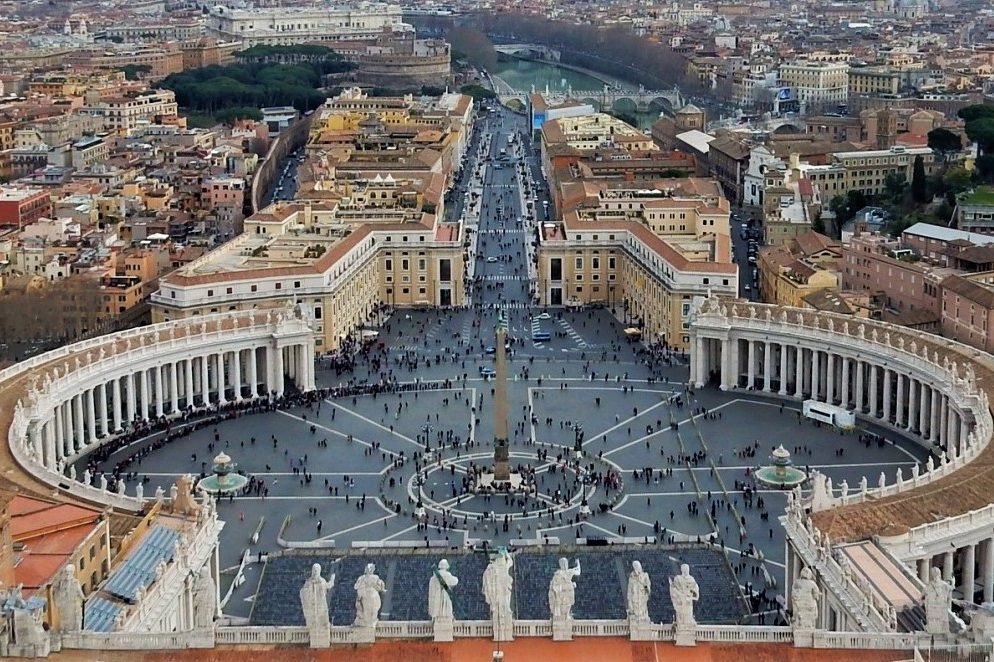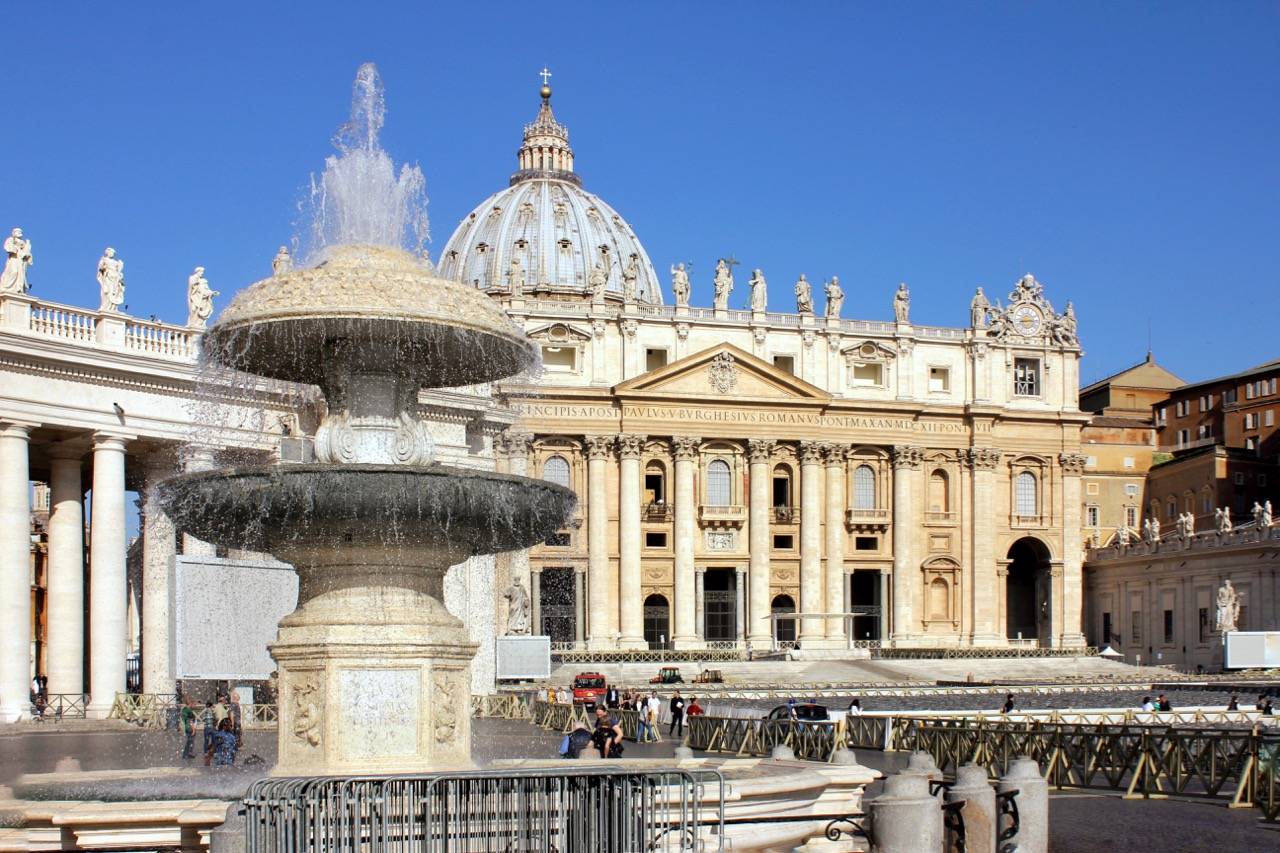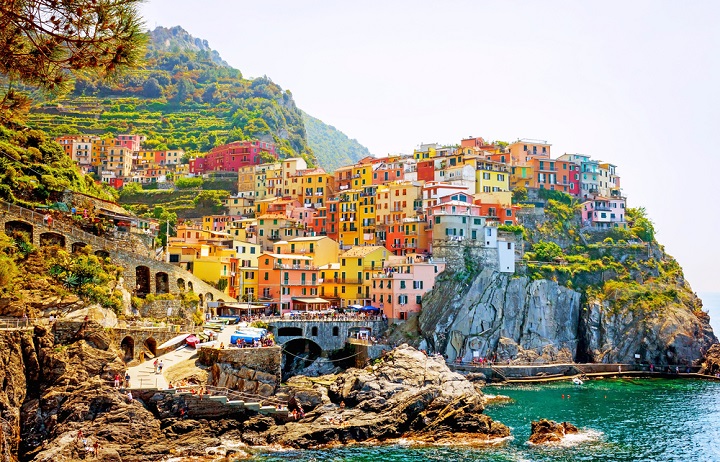There is no doubt that Rome is one of the most beautiful cities in the world. The Vatican State, the world’s smallest country and home to the Pope is the smallest independent state in the world with an area of 0. 44sq. km/110 acres and a population of 800(2000). The extensive territories of the Papal States in central Italy, originally presented to the Pope by the Frankish king Pippin the Short (714-768), father of Charlemagne (~748–814), were incorporated in the new kingdom of Italy in 1870. The Pope thereafter regarded himself as a prisoner in the Vatican, and this rift between Church and State(the «Roman Question» was a political dispute between the Italian Government and the Papacy from 1861 to 1929) was not finally healed until 1929, when Mussolini(1883–1945) concluded the Lateran Treaty (signed on February 11, 1929) with the Holy See under which the Pope gained full sovereignty over the more restricted territory of the Vatican State.

St. Peter’s Basilica, Vatican City, interior view. Image/Matthew McManus.
Vatican City – Top Attractions
St. Peter’s Basilica – The mother church of Catholicism, Saint Peter’s Basilica is the largest church in the world, a temple of art, and the resting place of many former popes.
Sistine Chapel – Today millions(every year some five million people, as many as 20, 000 a day in summer) of visitor’s come to Rome and rush to the Vatican Museums, for the most part to make their way to the Sistine Chapel to stand in awe, necks strained to see the work of a genius. On October 31, 1512, only 20 years after the discovery of America, Pope Julius II(1443–1513) said an evening vespers service to inaugurate the room where Michelangelo toiled for four years, much of it on his back, to finish his ceiling frescoes.
Raphael Rooms – The four rooms known as the «Stanze» formed part of the apartment situated on the second floor of the Pontifical Palace that was chosen by Julius II della Rovere (pontiff from 1503 to 1513) as his own residence and used also by his successors. The pictorial decoration was executed by Raphael and his school between 1508 and 1524.
Room of Constantine
Room of Heliodorus
Room of the Segnatura – here you can find Raphael’s «The School of Athens», perhaps Raphael’s most famous fresco
Room of the Fire in the Borgo
The Pinacoteca, founded by Pius VI (1717–1799) – contains in its 16 rooms, a collection of pictures ranging in date from the Middle Ages to the present day
Vatican Library – the Vatican Library is the richest library in the world. Since its foundation by Nicholas V in 1450 the library has been systematically built up, and now contains, in addition to books printed since the end of the 15th century, some 7, 000 incunabula, 25, 000 medieval hand-written books and 80, 000 manuscripts.
St. Peter’s Square – represents the core of the Vatican City, the smallest state in the world. In the centre of the square stands out an Egyptian obelisk (without hieroglyphics and built during the Ramsete II dynasty) brought to Rome by Emperor Caligola in 37 b. C. The colonnade is composed of 284 columns and 88 pillars in a quadruple row, an impressive work to symbolise, according to the artist, the ‘gathering of Christianity’.
Gardens of Vatican City – the Vatican Gardens have been a place of quiet and meditation for the popes since 1279 when Nicholas III (Giovanni Gaetano Orsini, 1277-1280) moved his residence back to the Vatican from the Lateran Palace. The Vatican Gardens, behind St Peter’s and the Vatican Palace, occupy a large part of the area of Vatican City. The gardens and parks were established during the Renaissance and Baroque era and are decorated with fountains and sculptures.
Vatican Necropolis – the Vatican Necropolis lies under the Vatican City, at depths varying between 5–12 meters below Saint Peter’s Basilica.
Vatican Museums – they display works from the immense collection built up by the Roman Catholic Church throughout the centuries including some of the most renowned classical sculptures and most important masterpieces of Renaissance art in the world. Here you can take a walk on the famous Spiral stairs of the Vatican Museums, designed by Giuseppe Momo in 1932.
Appartamento Borgia – the Borgia Pope Alexander VI (1492-1503) had a private residence built for himself and his family within the Vatican Palace, he commissioned Pinturicchio to decorate it with wall and ceiling paintings. Between 1492 and 1495 the painter and his assistants and pupils painted a series of scenes, combining Renaissance, humanist and ancient themes with Christian subjects.
Vatican City – PHOTO GALLERY
St. Peter Basilica, Vatican – The altar with Bernini’s baldacchino. Image/Ray Morris.
St. Peter Basilica, Vatican. Image/Ray Morris.
Left – The apse with St. Peter’s Cathedra supported by four Doctors of the Church. Image/Ray Morris.
St. Peter Basilica, Vatican – interior view. Image/Richard Cassan.
Belvedere Torso – What remains of a sculpture of Hercules in the Vatican Museum. Image/Richard Cassan.
Piazza San Pietro, Vatican City. Image/Richard Cassan.
The dome was brought to completion by Giacomo della Porta and Fontana. Image/Nathan Rupert.
Vatican Museum, Vatican City. Image/David Blackwell.
The Spiral staircase is located in the Vatican Museums was designed by Giuseppe Momo in 1932. If you go up this grand spiral ramp you will be moving from the street level up to the floor of the Vatican Museums. Image/William Pearce.
Double Helix Spiral Staircase – Vatican Museum. The beautiful spiral staircase at the Vatican Museum, from below. Designed by Giuseppe Momo in 1932, the broad steps are somewhere between a ramp and a staircase. They were designed to be wide and have a small enough amount of climb so that horses could walk up them. The stairs are actually two separate helixes, one leading up and the other leading down, that twist together in a double helix formation. Image/Daniel Peckham.
In this panoramic view, bishops of the world line the nave of St. Peter’s Basilica during the opening session of the Second Vatican Council Oct. 11, 1962. This year marks the 50th anniversary of the start of the council, one of the monumental events in modern religious history. (CNS photo) See VATICAN-LETTER Jan. 27, 2012.



